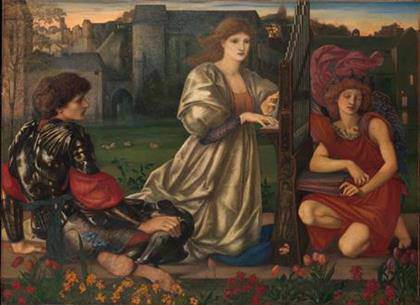
Lower Part of a Rhyton: Bull’s Head
Sogd (?), 6th–8th century
Clay, carved, engobe, fired
© State Hermitage Museum, St Petersburg

Pilgrim, Dunhuang, China, Cave 17, 9th century
Ink and paint on paper
© State Hermitage Museum, St Petersburg
Treasures from the Silk Road – Hermitage Amsterdam ‘Expedition Silk Road: Treasures from the Hermitage’. Hermitage Amsterdam offers visitors a glimpse of the long-lost civilizations along the legendary Silk Road. 1 March – 5 September 2014.]]>
Source: Hermitage Amsterdam
The more than 250 treasures in the exhibition come from thirteen archaeological sites or regions on the Silk Road, associated with a variety of kingdoms and places. Along the trade routes, an unprecedented interchange of goods and ideas took place, as shown by the monumental murals excavated all along the Silk Road. Buddhism was probably the most important cultural phenomenon to spread by means of these roads, borne from India towards China by wandering monks. Centuries later, Islam began moving eastward along the same paths, replacing Buddhism in many places. Christianity and Judaism were also disseminated along the Silk Road. For instance, an incense burner with Christian iconography and a ring showing Daniel in the lion’s den have been found deep in Central Asia.
The largest-scale interchange was the trade in goods. Caravans with reportedly as many as a thousand camels, horses, oxen, and donkeys traversed the region from east to west, from north to south, and back again. Silk was one of the first trade items, and for a while it was even a means of payment. But many other products travelled the Silk Road. Besides silk, the products from China included lacquer or mirrors. From the Mediterranean region in the west came goods such as glass and textiles. Fur came from Siberia in the north, while topaz, emeralds, perfumes, henna, and exotic animals were brought from India in the south. Central Asian cultures, such as the vanished kingdom of Sogdia, produced exquisitely wrought silver for trade or higly esteemed horses.
The cultures of the Silk Road were not rediscovered until the late nineteenth century, when Russia, Great Britain, France, Germany, Sweden, and Japan organized the first expeditions. Dozens of expeditions headed by Russian archaeologists set off for Mongolia, western China, and later to what is today the Central Asian republics. On many sites, they uncovered treasures spanning many centuries, from long before Christ to the Middle Ages. In the Hermitage in St. Petersburg, these were presented as ancient treasures of the Chinese Turkestan, Mongolia and the Soviet Union with its many peoples. The objects in this exhibition have been drawn from the vast collection of the Oriental Department of the Hermitage. Finds from thirteen archaeological sites or historical regions form the basis for the exhibition, painting a vivid picture of the diversity and cultural influences along the Silk Road.
Related content
“Rubens, Van Dyck, Jordaens” at Hermitage Amsterdam (exhibition, 2011-2012)
Follow us on:


